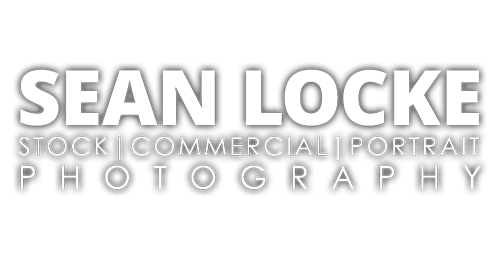The other day, I discussed how to use Resolve to prep footage for Stocksy. If you are a person just dealing with HD 30fps clips, you can skip over today’s post. However, if you’re working with the Canon 5dMk4, read on, because there are some tricks involved.
The 5dMk4 has a variety of recording options.

Plus the high speed option which records 120 (119.9 fps) at 1280×720. So, essentially, we have three video resolutions that the 5dMk4 records at: 4K: 4096×2160, FHD: 1920×1080 and HD: 1280×720 . We have have a few different frame rates as can be seen in the image, plus the high speed one. While working with a variety of recorded clips, I found several things that should be done when working with these clips in Resolve.
Separate Out The Clips Into Different Resolve Files
If you’re dealing with clips that are all one resolution and frame rate, then you’re fine importing them all into one file. However, if you have a variety of resolutions and frame rates, I suggest making a separate Resolve project for each resolution/frame rate. ie., Make “project_4k_clips” and “project_FHD_clips”, etc. You do this so that you can set your Resolve “project settings” based on the footage you are working with.

For example, I am working with a clip recorded at FHD 59.94fps . However, I want this clip to play back at FHD 23.98fps. This gives the effect of slow motion, taking more than two seconds to play all the frames recorded during one second of time. So, before I do anything in my new project, I go to File->Project Settings->Master Project Settings and change the “Timeline frame rate” to my end desired result. Then, using the media browser area, I find my FHD 59.94fps clips and import them into my bin. I then go through them, rejecting ones I don’t like and trimming the ones I do, as described in the earlier article.
When done trimming, I then select all the resulting clips in the bin area, and right click->Clip Attributes. There, I change the current setting of 59.94fps to 23.976fps.

Without doing this, the clip will still play at slow motion. However, when you get to the “Deliver” step and are rendering out your individual clips, changing this value has the effect of setting the fps in the rendered file your new fps of 23.976. If you do not do this step of editing the clip attributes, the meta data that says the fps is 59.94 will continue through to the rendered file resulting in your new clips thinking it is 59.94fps. Stocksy has said that clips sent that are greater than 30fps will be converted to 30 or 24fps, so I fear this might cause confusion. Following these steps should ensure things work smoothly. Resolve seems to take care of the 60->24 fps conversion with no issues.
With 4k files at regular speed, you do not need to worry about this, as you’re not trying to “trick” Resolve into playing it slower.
That all said, the HD 120 (119.9 fps) slow motion clips actually have the fps set to a useful 29.97fps straight out of the camera, instead of knowing it was shot at 119.9fps. So, no need to edit clip attributes there either. The below image shows the Resolve meta data panel for a slow motion clip straight from the camera.

I know, weird, right?
Once you are done in the Media panel, proceed to the Edit and Color panels as needed (described in the last blog post), and then to the Deliver panel. Here, you can use the “Render at source resolution” option for your individual clips for FHD and HD if you like, or manually set the resolution. This does not affect the fps that will end up in the file.
Notice I said FHD and HD. What about 4k?
Dealing With 5dMk4 4k Clips In Resolve
Here, we have an issue. The 5dMk4 clips are 4096×2160 (DCI). The free version of Resolve has a resolution limit of 3840×2160, which is known as UHD (Ultra High Definition). So, when we go to set up our project in the first step up above, the largest timeline resolution we can create is UHD.

When you import a DCI clip, Resolve scales it down in the viewing windows to fit UHD. It scales both the height and width by .9375, so the width becomes 3840 and the height becomes 2025. Then it fills in the top and bottom with black bars to make it a 3840×2160 clip. It adds 135/2 pixel height black bars to the top and bottom. I’ve blown out this screen capture, because it’s hard to see the black bars against the dark, dark grey background of Resolve.

Now, what we need to do is scale our clip back up to fill in the black area. This means that you are going to lose some pixels on the sides as the clip will be uniformly scaled up, so keep that in mind when shooting. The amount we need to scale back up is 1.06666. That’s the inverse of .9375 . We can apply this to every clip individually, or add it to the whole timeline to fix them all at once. This is why I suggest doing each resolution/fps in a separate file. Go to the Color page. At the top right of the page, click “Nodes” to show the Node editor. Switch “Clip” to “Timeline”. Now, go to the middle bottom panel of the page and select the “Sizing” icon. Then choose “Output Sizing” from the tab on the right. Now enter “1.0666” in the Width and Height boxes. The rescale covers the black bars, but extends the image on the sides off of the canvas, so we are losing pixels there. C’est la vie.

Continue on to the Deliver page, and you are ready to output your 4k DCI files (cropped) as UHD 3840×2160 resolution.
(Under the hood – From my readings on various forums, that when Resolve does the rendering process, it works as follows. It imports the source clip and scales it down to fit the timeline settings in the Media step. It then proceeds to any modifications done on the Edit page if you are rendering out “timeline” not “individual clips”. Then it adds any changes done on the Color page, ie., the scale back up, and then whatever you’ve entered on the Deliver page. So, technically, we’re losing a tiny bit of resolution from the scale down/scale up. Imagine if you scaled an image in Photoshop from 5000×5000 to 50×50 and then back up. You lose all that information in the middle step and then end up with a horribly pixelated image. We’re essentially doing the same thing here, but the change is so minuscule, you’ll never notice.)
That’s It!
Well, maybe, maybe not. This is from my ongoing experimentation. If you find something different, or an easier way to do it, please let me know so I can update this post. Thanks!








Hey Sean, nice post. I did notice one step you could take to really simplify your workflow. Instead of using the sizing tabs to remove the letter boxing on your 4K DCI footage, you can also simply go to Project Settings > Image Scaling and change “Input Scaling Preset” to “Scale full frame with crop”. This will globally scale all your footage to fill the frame with no letterbox. Hope that helps!
– Evan
Hey Sean, nice post. I did notice one step you could take to really simplify your workflow. Instead of using the sizing tabs to remove the letterboxing on your 4K DCI footage, you can also simply go to Project Settings > Image Scaling and change “Input Scaling Preset” to “Scale full frame with crop”. This will globally scale all your footage to fill the frame with no letterbox. Hope that helps!
– Evan
Thanks! Next time I’m in resolve I’ll have to try it. I’ve moved to Premiere for the stabilizing, pretty much.
I have DaVinci Resolve 12.5 and I have also found Premiere to be more useful for many things, but for color grading I prefer Davinci Resolve….. one other thing DaVinci works great for is upsizing my 1080p dslr footage to 4k, but that would not be applicable to somebody shooting stock footage for submission, more geared toward filmmakers.